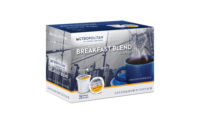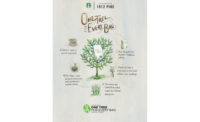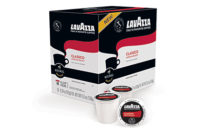2015 State of the Beverage Industry: Single-serving, iced coffees show growth
Other coffee segments losing share from single-cup coffee








Growing trends such as higher-priced single-serve packaging are helping to offset rising costs of coffee beans in the coffee market, according to market research analysts.
Despite the challenge of raised coffee bean prices, category trends are helping many coffee makers to offset these commodity costs. For instance, consumer demand for specialized coffees, such as single-serve pods, has justified an increase in product pricing, IBISWorld suggested.
Although single-cup coffee pods are bringing value to the overall coffee category, they also are cannibalizing ground coffee sales, noted Dana LaMendola, beverages analyst for Euromonitor International, Chicago, in Beverage Industry’s September 2014 issue.
“The coffee pod growth is affecting ground coffee sales much more than any other segment because these are appealing to the same consumer, so that has the ability to take share away most often from ground coffee vs. beans or instant,” she explains.
According to IBISWorld’s April “Coffee Production in the US” report, ground roasted coffees, traditional and specialty, account for 73.6 percent of market revenue so far in 2015. On the other hand, whole-bean coffee only accounts for 13.4 percent of the overall coffee market.
Sales of ground and whole-bean coffee have declined fairly rapidly in the past year, according to data from Chicago-based Information Resources Inc. (IRI). Data shows that the ground coffee segment was down almost 3.5 percent in dollar sales in U.S. multi-outlets for the 52 weeks ending May 17, compared with the prior-year period. Likewise, ground decaffeinated coffee decreased 7.3 percent in dollar sales, and whole-bean coffee declined approximately 3.7 percent during the timeframe, compared with the prior-year period, according to IRI data. On the other hand, IRI reports that single-cup coffees increased 20.7 percent during the timeframe compared with the prior-year period.
The proliferation of flavors and brands in the single-cup coffee segment adds to the appeal of single-cup coffees; however, convenience is the main motivation for buying this coffee format, William A. Roberts Jr., senior research analyst of food and drink at Mintel, Chicago, told Beverage Industry in its September 2014 issue.
“[Ready-to-drink] (RTD) coffees — refrigerated and shelf-stable — are actually reaping the benefits of time-pressed consumers for whom even the few minutes necessary to brew a single cup is a luxury,” Roberts said. “As with single-cup, the RTD market is likewise expected to grow over the next five years, albeit at a slower pace, but to enter 2020 as a $2.6 billion segment.”
According to IRI data, shelf-stable cappuccinos and iced coffees increased 15.6 percent in dollar sales in the 52 weeks ending May 17, compared with the prior-year period. Additionally, dollar sales of refrigerated RTD coffees grew 7.1 percent during the timeframe, compared with the prior-year period, IRI data shows.
Although consumer demand for convenience has positively impacted the single-serve and RTD coffee segments, it hasn’t benefited the instant coffee segment. According to Euromonitor’s LaMendola, the segment declined in both dollar and volume sales last year. Furthermore, IRI data show that regular instant coffee declined 3.6 percent in dollar sales in the 52 weeks ending May 17, and instant decaffeinated coffee decreased 4.8 percent in dollar sales, compared with the prior-year period.
Although Folgers Fresh Breaks, a brand of The J.M. Smucker Co., and Starbucks Coffee Co.’s Starbucks Via instant coffees are positioned as premium, higher-quality instant coffees, Americans still generally perceive instant coffee to be an inferior option, Euromonitor’s LaMendola noted.
IBISWorld noted that in the five years leading up to 2019, revenue for the coffee market is forecast to grow at an annualized rate of 2.7 percent, as coffee bean prices exhibit less volatility.
Looking for a reprint of this article?
From high-res PDFs to custom plaques, order your copy today!









